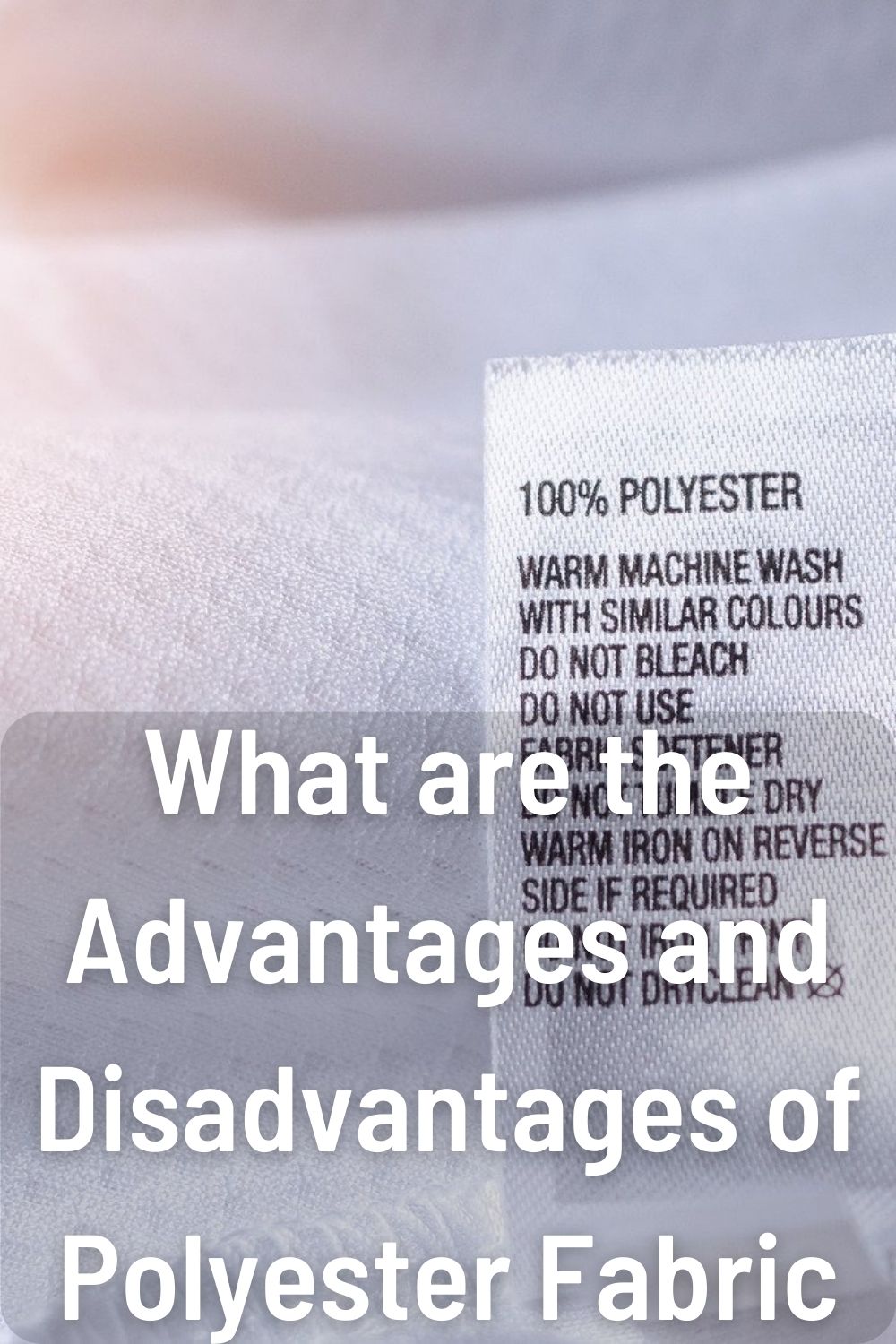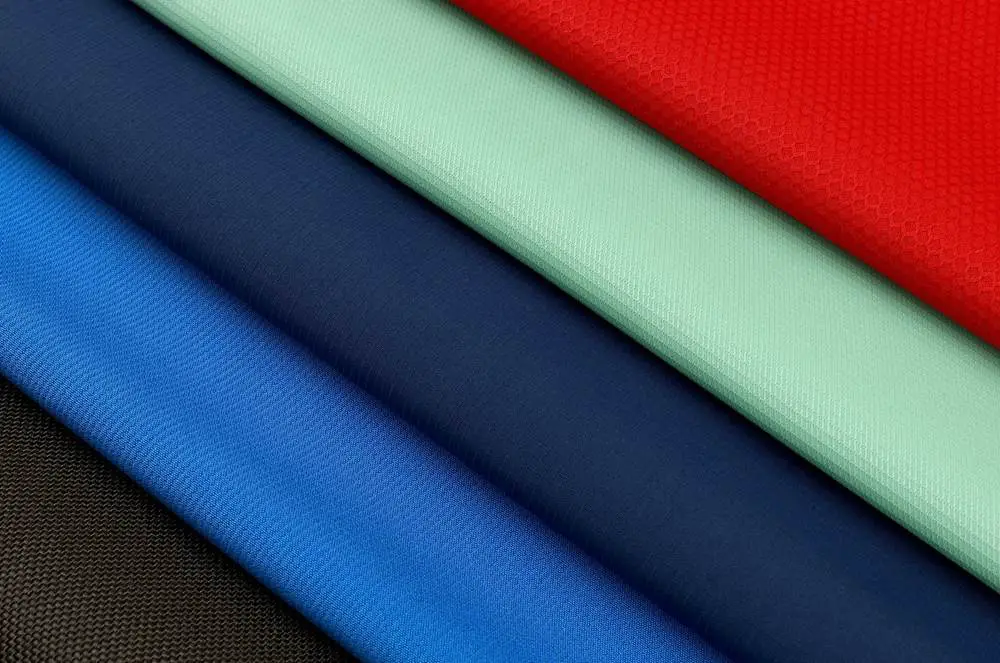
Polyester is one of the most popular synthetic fabrics used in clothing and home furnishings today. It is made from petroleum and is known for its durability, affordability, and versatility. However, polyester also has some drawbacks that are important to consider when deciding if it is the right choice for your needs. This complete guide will examine the pros and cons of polyester fabric in detail.
Table of Contents
Advantages of Polyester Fabric
There are many benefits that make polyester a top choice for clothing, upholstery, and other textile applications:
Durability
One of the biggest advantages of polyester is its strong and long-lasting nature. The fibers are very resilient and resistant to wear, stretching, shrinking, and mildew. This makes polyester garments keep their shape wash after wash. Home furnishings like polyester carpets and drapes also show excellent durability over time.
Wrinkle Resistance
Polyester fabric has a smooth, compressed molecular structure that makes it highly resistant to wrinkles. This makes it ideal for travel clothes that need to look crisp after being folded in a suitcase. The wrinkle-free nature also makes polyester a good choice for tablecloths and other home textiles where a smooth, unwrinkled appearance is desired.
Colorfastness
The dyes used on polyester fabric tend to bind very tightly and retain their hues well over time. Unlike natural fibers like cotton and wool, polyester is less prone to fading. This colorfastness makes it useful for outdoor applications like awnings and boat sails that receive heavy sun exposure. Vibrantly colored polyester clothes also hold their shades through many wearings and wash cycles.
Affordability
Polyester is one of the least expensive synthetic fabrics. It is cheaper to manufacture than natural materials like silk or cotton. This low cost per yard makes polyester an affordable choice for mass-produced clothing and household items. Consumers can purchase more polyester apparel and home decor for the same budget.
Versatility
With its combination of low cost, durability, wrinkle resistance, and colorfastness, polyester can be used in a wide array of applications. It is made into clothing like shirts, pants, dresses, suits, activewear, and outdoor gear. Home textile uses include carpets, drapes, blankets, upholstery, and more. This versatility makes polyester a go-to fabric for many uses.
Easy Care
Polyester fabric is machine washable and dryable for easy care. It can be laundered at home repeatedly without distorting or wearing out. This wash and wear performance coupled with its resistance to wrinkles makes polyester a low maintenance fabric choice. Items like polyester dress shirts can be washed and worn again and again without ironing.
Weather Resistance
Polyester fibers are hydrophobic, meaning they naturally repel water. This makes polyester fabric resistant to moisture from rain, snow, and humidity. Polyester outdoor gear and clothing will keep the wearer dryer than natural alternatives. Home textiles like polyester awnings and patio cushions also withstand wet weather well.
Non-Allergenic
Unlike protein-based fibers like wool, polyester does not provoke allergic reactions in most people. This makes it a good choice for those with sensitive skin who cannot wear irritating natural fabrics. The hypoallergenic nature of polyester allows more people to wear it without experiencing discomfort.
Wrinkle Recovery
While resistant to wrinkles, polyester can become creased with prolonged pressure. However, it demonstrates good wrinkle recovery power. Once pressure is removed, the fibers spring back to their original smooth form. So polyester clothes that become wrinkled in a suitcase will typically hang smooth again after a quick touch up.
Breathability
The structure of polyester fibers allows a degree of air permeability and moisture wicking. This means polyester fabrics can breathe fairly well, allowing evaporation of perspiration. So polyester athleticwear and outdoor gear have some natural breathability and ventilation to keep wearers cooler and drier.
Shape Retention
In addition to resisting wrinkles, polyester fabric also maintains its originally cut shape over time. It does not tend to stretch out or sag, retaining fit and form wash after wash. This shape holding capacity is useful in clothing like dresses, suits, and uniforms that need to maintain a tailored silhouette.
Disadvantages of Polyester Fabric
For all its advantages, polyester also has some downsides to be aware of:
Heat Retention
The dense structure of polyester fibers makes the fabric tend to retain heat. In warm weather, polyester clothes can become hot and uncomfortable compared to more breathable natural fabrics. Thicker polyester items like blankets and winter coats also tend to be very warm, causing overheating indoors.
Static cling
Polyester’s slick surface tends to accumulate static electricity easily. Plastic-like polyester clothes are prone to clingy static that causes garments to stick together and attract lint and pet hair. Home textiles like polyester curtains can cling to each other and require anti-static sprays to reduce this nuisance.
Environmentally unfriendly
Polyester is made from non-renewable petroleum sources in a process that requires large amounts of energy. It does not biodegrade quickly and sheds microplastic fibers when washed. The manufacture, use, and disposal of polyester has negative impacts on the environment compared to natural textiles.
Lack of absorbency
The synthetic structure of polyester makes absorbency poor compared to fibers like cotton and wool. Liquids tend to bead up on the surface rather than soaking in. Perspiration can feel clammy against polyester skin rather than wicking away. Poor absorbency also means polyester towels and diapers are inferior to cotton alternatives.
Prone to pilling
While strong, polyester fibers tend to break and form unattractive fuzz balls called pills during abrasion. Pilling is common on polyester sweaters and fleece jackets. This damage detracts from the appearance and shortens the useful life of polyester fabrics.
Odor retention
Polyester tends to retain odors more than natural materials. Sweat, perfume, and other smells cling to polyester fabrics and can be difficult to wash out fully. Over time, polyester clothes and textiles absorb ambient scents that compromise freshness. More frequent laundering is required to keep polyester smelling clean.
Low moisture absorption
Polyester absorbs very little moisture, which can feel clammy against the skin when sweating. This is especially problematic in athletic clothing, where polyester doesn’t wick perspiration away from the body as effectively as moisture-absorbing natural fibers.
Prone to oil stains
The smooth surface of polyester attracts and retains oily stains. Food grease and motor oil are especially problematic. These stains can be difficult to remove from polyester clothing and table linens, even with vigorous washing.
Static can attract lint and dust
In addition to clinging together, the static charge of polyester fabric tends to attract lint, pet hair, and dust. This can compromise the clean, crisp appearance of polyester clothes over time. Frequent lint removal is required. Home textiles like drapes and upholstery also accumulate dust and require more frequent cleaning.
Not eco-friendly
Polyester production generates more carbon emissions than natural fibers. It is also made from non-renewable petroleum sources. When washed, polyester sheds microplastic fibers that pollute waterways and harm marine life. Its environmental footprint is larger than sustainable textiles.
Less luxurious feel
Polyester has a smooth, plastic-like feel rather than the luxurious softness of silk and high-quality cotton. The synthetic hand feel is harsher against delicate skin. While affordable, polyester is less desirable for luxury fashion and bedding where a soft, natural touch is preferred.
Polyester vs. Common Alternatives
Polyester compares to other common fabrics in the following ways:
Polyester vs. Cotton
- Polyester advantages: Wrinkle resistance, durability, weather resistance, stretch, shape retention
- Cotton advantages: Breathability, softness, absorbency, eco-friendly, luxurious feel
Polyester vs. Wool
- Polyester advantages: Wrinkle resistance, affordability, easy care, hypoallergenic
- Wool advantages: Warmth, luxury feel, moisture wicking, odor resistant, eco-friendly
Polyester vs. Silk
- Polyester advantages: Affordability, durability, easy care, weather resistance
- Silk advantages: Softness, luxurious look and feel, breathability, moisture absorption
Polyester vs. Linen
- Polyester advantages: Ease of care, wrinkle resistance, affordability, durability
- Linen advantages: Breathability, luxury feel, absorbency, eco-friendly, natural temperature regulation
Polyester vs. Rayon
- Polyester advantages: Durability, stretch, weather resistance, wrinkle recovery
- Rayon advantages: Absorbency, softness, breathability, beautiful drape, eco-friendly
Polyester vs. Nylon
- Polyester advantages: Better UV resistance, more dye varieties, cheaper
- Nylon advantages: More lustrous, stronger, more abrasion resistant
Polyester Fabric Uses

With its beneficial properties, polyester is used in a wide variety of applications:
Clothing
- Activewear, athletic uniforms
- Formal wear, business suits
- Outerwear, rain jackets
- Casual wear, pants, dresses, blouses
- Performance wear, outdoor gear
Home Textiles
- Upholstery, drapes, blankets
- Carpet, area rugs
- Table linens
- Outdoor cushions, awnings
Industrial Uses
- Conveyor belts, safety belts
- Auto tire reinforcement
- Ropes, tarps, awnings
Conclusion
Polyester is valued for qualities like durability, wrinkle resistance, affordability, and easy care. However, drawbacks like heat retention, static cling, and environmental impact should also be considered. Polyester works well when blended with natural fibers like cotton and wool to balance the pros and cons. For many textile applications, it offers an optimal combination of performance, price, and convenience. Understanding both the advantages and disadvantages allows the informed selection of polyester when it is the right synthetic choice over fabrics like nylon and rayon.
Frequently Asked Questions
What are the main advantages of polyester fabric?
The main advantages of polyester fabric include durability, wrinkle resistance, colorfastness, affordability, versatility, easy care, weather resistance, and shape retention. These beneficial properties make it a top choice for clothing and household textiles.
What are the biggest disadvantages of polyester fabric?
Major disadvantages of polyester include poor breathability, static cling, environmental issues, lack of absorbency, pilling, odor retention, low moisture absorption, staining, and attraction of lint/dust. Polyester also lacks the luxurious feel and drape of natural fabrics.
Is polyester good for making clothes?
Polyester makes very durable, wrinkle-free, easy care clothing. It works well blended with natural fibers like cotton for shirts, pants, dresses, suits, and outdoor wear. Pure polyester can feel hot in warm weather. Absorbent natural fibers help polyester clothing breathe better.
How does polyester compare to cotton?
Polyester is more durable, wrinkle-free, and weather resistant than cotton. But cotton offers superior comfort, breathability, absorbency, and softness. Cotton also feels more luxurious against the skin. A polyester/cotton blend balances the strengths and weaknesses of each fiber.
Is polyester bad for the environment?
Polyester production and disposal have larger carbon footprints compared to natural fibers. Polyester is made from non-renewable petrochemicals. When washed, polyester sheds microfibers that pollute waterways. More eco-friendly textile choices include cotton, linen, hemp, and wool.